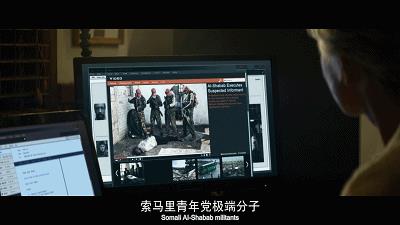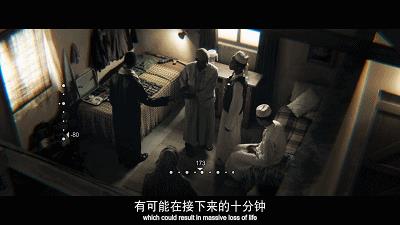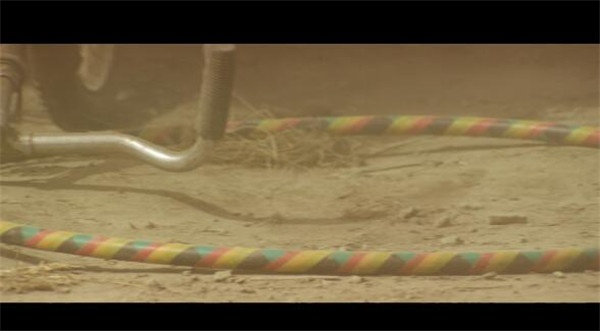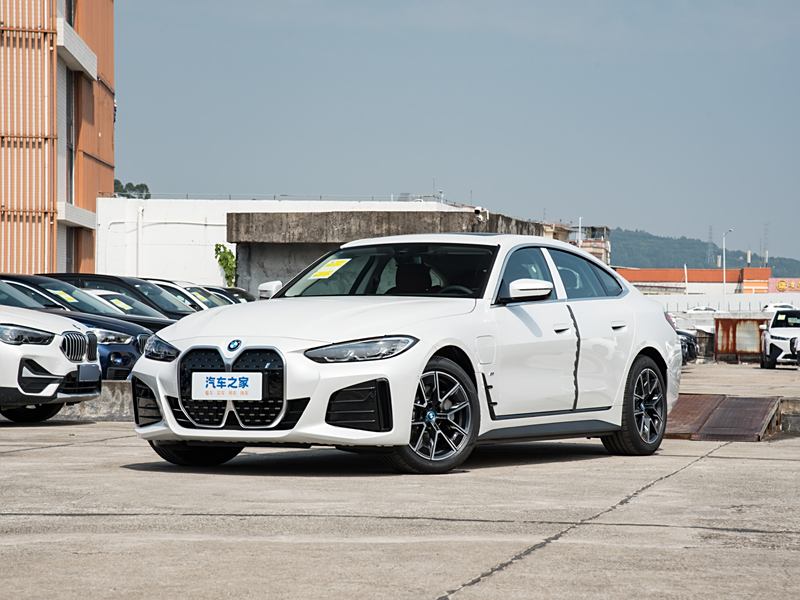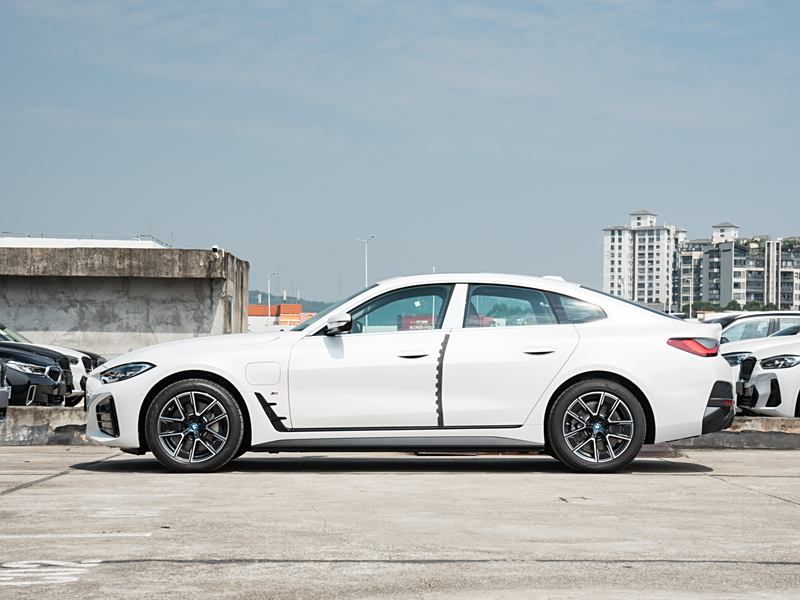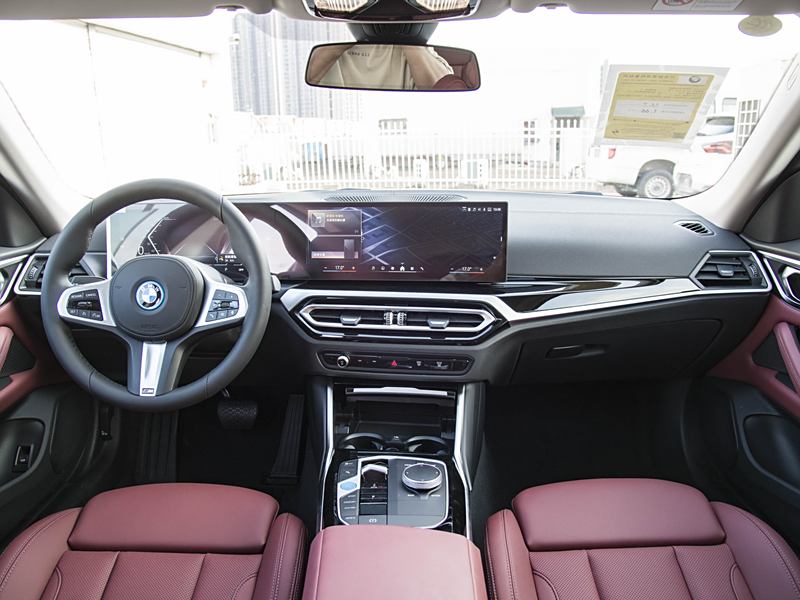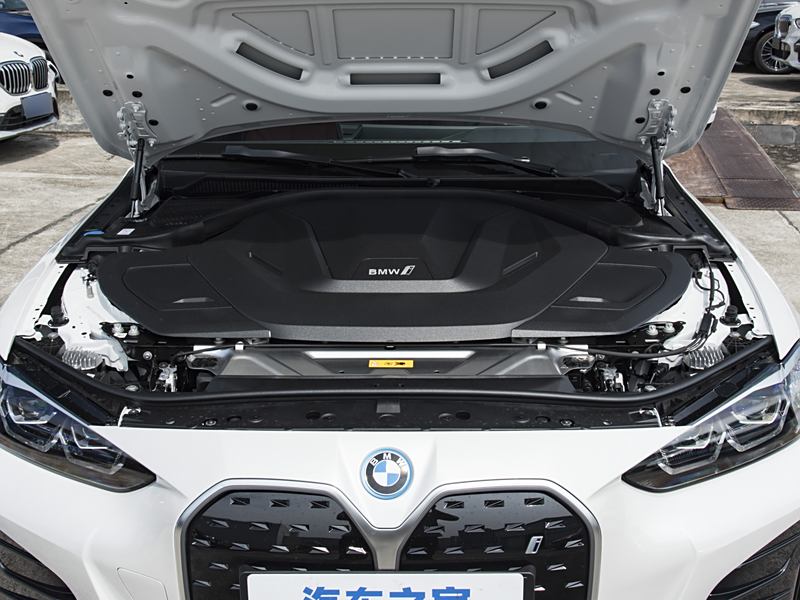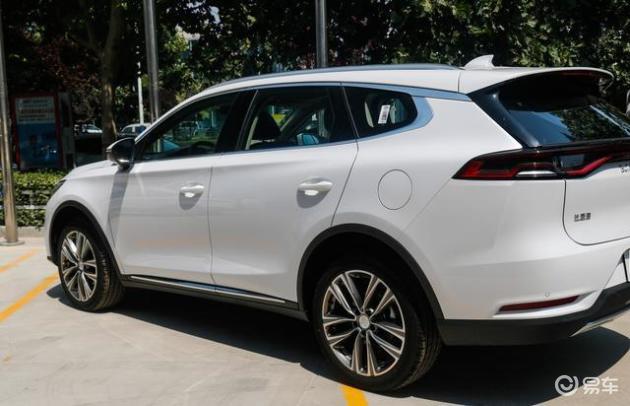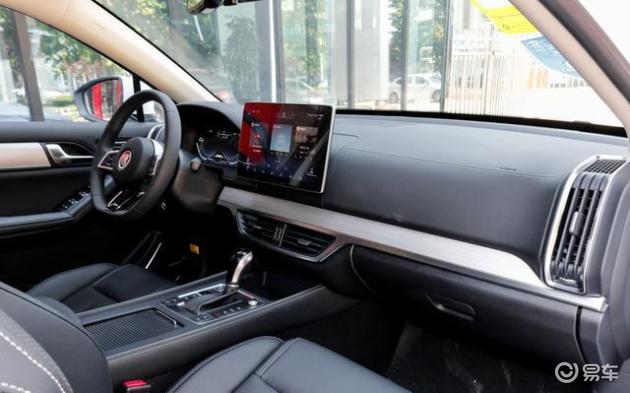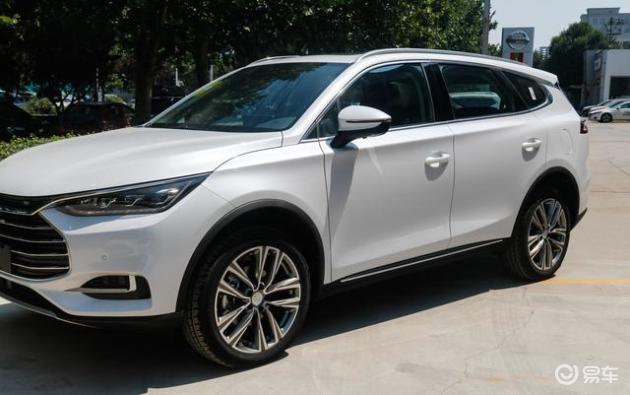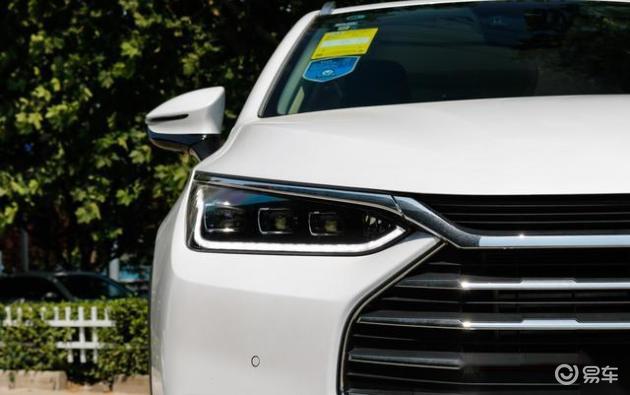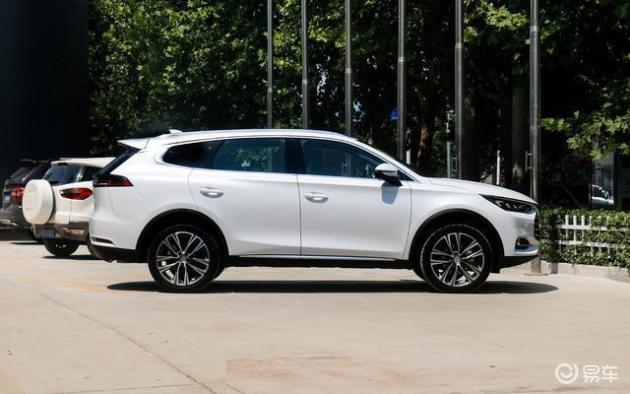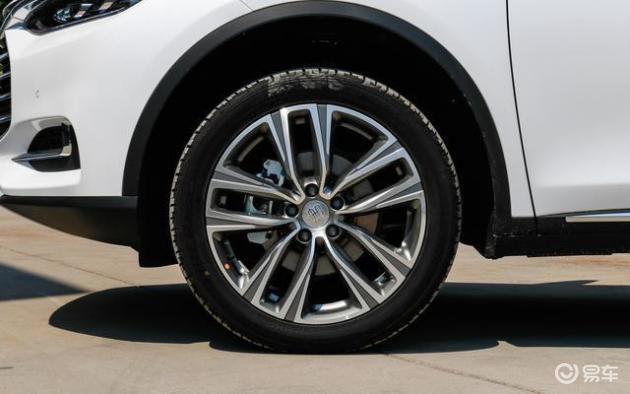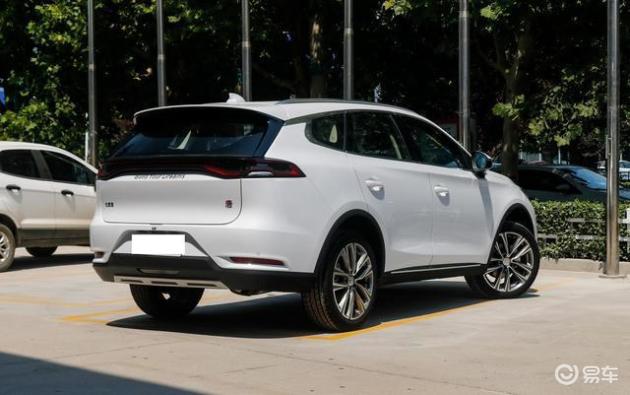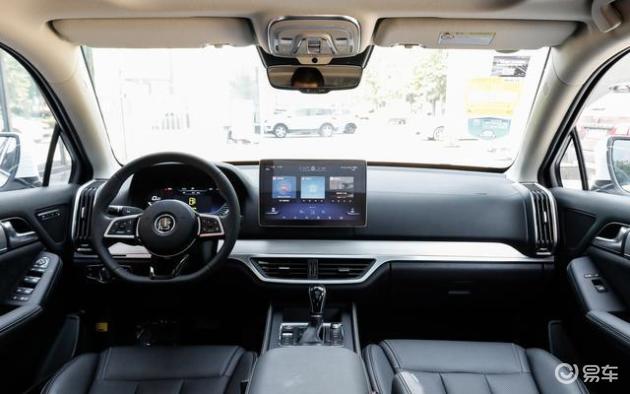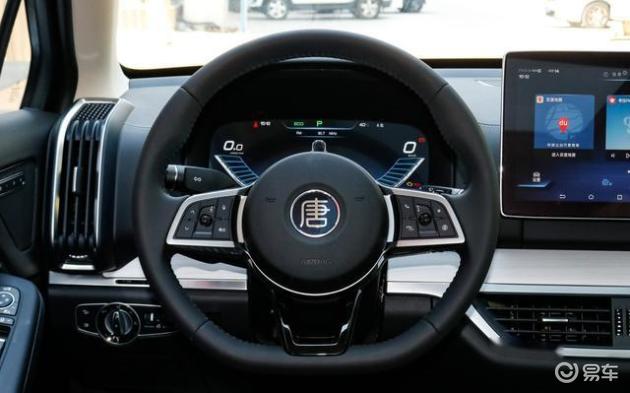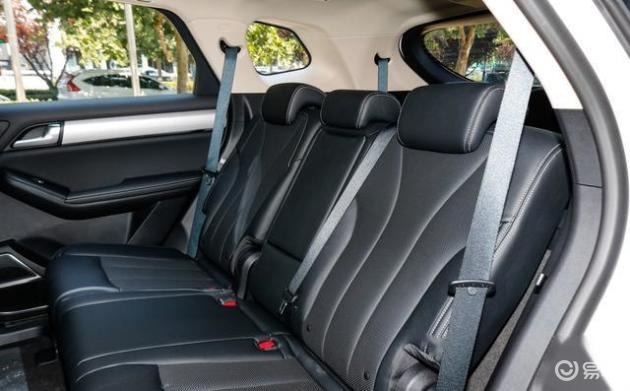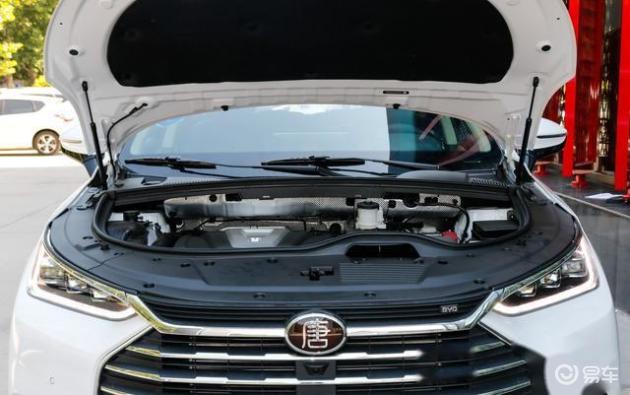() The business review of the Board of Directors in the first half of 2023 is as follows:
I. Main businesses of the Company during the reporting period
1, the development of the industry
The company’s industry is automobile parts and accessories manufacturing (C3660), which is greatly influenced by the automobile industry.
(1) Automobile production and sales maintain development resilience.
After the impact of the switch of promotion policies and the fluctuation of market prices in the first quarter, the domestic automobile market was driven by the central and local policies to promote consumption, the announcement on issues related to the implementation of the national six emission standards for automobiles, automobile marketing activities in many places, and the launch of a large number of new models by automobile companies. The semi-annual node impulse of superimposed automobile companies was relatively low compared with the same period in April and May of last year, and the market demand gradually recovered. In the first half of 2023, domestic automobile production and sales achieved a high growth. According to the statistics of China Automobile Industry Association, in the first half of 2023, domestic automobile production and sales totaled 13.248 million and 13.239 million, up 9.3% and 9.8% respectively.
Xu Haidong, deputy chief engineer of China Association of Automobile Manufacturers, said: "However, we should also see that the current external environment is still complicated, some structural problems are still outstanding, consumer demand is still insufficient, industry operation is still under great pressure, and there are still many challenges in business operation. It is necessary to maintain the stability and predictability of policies and help the industry run smoothly."
(2) China automobile industry has made new achievements, and opportunities and challenges coexist.
With the development of China market, China automobile industry has made continuous breakthroughs and made some achievements, but some difficulties, shortcomings and challenges have also been exposed in the development process. On the one hand, under the background of electrification, intelligence and digitalization, although the traditional competitive advantages of joint venture car companies still exist, their shortcomings are increasingly exposed, such as slow upgrading and low configuration compared with domestic car companies. According to the statistics of the Association, in the first half of 2023, the sales volume of some joint venture car companies in Chinese mainland declined collectively, while domestic independent brands rose rapidly, accounting for half of the country’s total. According to the list of Fortune Global 500 in 2023, according to the turnover, 24 car companies in the world were on the list, including 7 in China. According to the statistics of China Association of Automobile Manufacturers, the domestic vehicle exports reached 2.14 million, up 75.7% year-on-year. New energy vehicles exported 534,000 vehicles, up 1.6 times year-on-year. Japan Automobile Manufacturers Association announced that Japanese automobile exports in the same period were 2.02 million vehicles, and China’s automobile exports surpassed Japan for the first time in the first half of the year to become the world’s largest automobile exporter. According to the data of the National Bureau of Statistics, the investment in automobile manufacturing industry increased by 20% year-on-year in the first half of 2023, which was higher than the national fixed assets investment of 16.2%, indicating the future development potential of China automobile industry. On the other hand, in recent years, due to many factors, such as lack of core and expensive electricity, rising raw material prices, unbalanced profits in the industrial chain, withdrawal of subsidies and intensified competition, some domestic auto companies continue to lose money, and the profitability of enterprises has become the core problem for the sustainable development of China’s auto industry. The world situation is accelerating,Facing the complicated international environment and the development of domestic economic upgrading, China’s automobile industry has also put forward new requirements for transformation and upgrading, cost control and brand promotion. Traditional automobile giants have intensively announced electrification strategies and participated in competition, and the development of China’s automobile industry is facing new challenges.
2. Main business of the company
Demais is a high-tech enterprise with innovative ability, which focuses on the research and development, production and sales of precision shafts and precision cutting parts, and is committed to providing customers with high-quality products and integrated services throughout the process. The company’s main products are precision shafts and precision cutting parts, which are used in the window system, power system, body and chassis system of automobiles. In addition, some products are industrial precision parts, and "multi-variety, non-standard and customization" is the main feature of the company’s products. During the reporting period, the company’s main business has not changed.
3. Business model
The company adopts the business model of "fixed production by sales" and has an independent and complete procurement, production and sales system. After years of development, it has formed a complete and efficient model of raw material procurement, product production, new product development and sales.
4. Market position
As a leading enterprise in the market segment of precision shafts and precision cutting parts in China, Demax has actively digested and absorbed leading manufacturing technologies and processes at home and abroad, introduced advanced production equipment from abroad, and cooperated with universities in Industry-University-Research in many fields, thus meeting customers’ demands for high quality, short delivery time and multiple models. Demax has always paid attention to management, innovation and sustainable development, with a wide range of products, stable quality and strong supply capacity, and has continuously increased the proportion of new energy automobile parts. It has passed the certification of IATF16949 quality management system, ISO9001 quality management system, ISO14001 environmental management system and GB/T29490-2013 intellectual property management system. Demax adheres to the fine tradition of "concentration, professionalism and dedication", and has accumulated a series of core technologies through long-term independent research and development, covering the whole production process of major products. The core technology level is in the forefront of the industry, and the patents cover the fields of process development, technology development and equipment development. As of the disclosure date of this report, the company and its subsidiaries have 47 invention patents and 33 utility model patents.
Demax has established strategic cooperative relations with many world-renowned first-class supporting suppliers of large multinational auto parts. Over the years, we have obtained Bosch, Toyota, DENSO, Aisin Seiki, Valeo, borgwarner, mahle, Marelli, Fully recognized by world-renowned auto parts suppliers such as Vitesco Technologies, Schaeffler and Johnson Electric, among the top ten global auto parts suppliers in 2023, four chose to cooperate with Demais. Demax has strong market competitiveness and brand awareness in the field of precision shaft and precision cutting parts manufacturing, and has been rated as the fourth batch of national service-oriented manufacturing demonstration enterprises, national intellectual property demonstration enterprises and intelligent factories in Liaoning Province, and won the title of "Little Giant" in the second batch of national specialization and novelty. The company’s technology center has been awarded as Dalian municipal enterprise technology center and Liaoning provincial enterprise technology center, the company’s precision shaft advanced manufacturing engineering research center has been awarded as Dalian municipal engineering research center, and the company’s trademark has been awarded as a well-known trademark in China.
5. Performance drivers
(1) Industry prosperity
The company’s industry is auto parts and accessories manufacturing, and the industry prosperity is an important factor driving the company’s performance. The high industry prosperity and strong supply and demand can effectively promote the company’s performance. At present, the automobile and its parts industry is still the global industrial base. With the continuous improvement of the penetration rate of new energy vehicles, the competitiveness of China’s automobile industry chain has been continuously enhanced, and the industry will still maintain a high prosperity.
(2) Technology research and development
Technical progress is an indispensable performance driver for manufacturing enterprises. Demax has always paid attention to R&D and technical investment, and has always maintained a leading position in the industry. Patented technology covers the whole process of the company. In addition, the company also has a number of non-patented core technologies. In recent years, the company has continuously strengthened the construction of digitalization and intelligence, effectively improved the level of production technology and intelligence, and cooperated with relevant universities and enterprises to create "Smart Demeishi". Excellent technology is the guarantee of Demax’s good performance and the cornerstone of Demax’s rapid development in the future.
(3) Management level
Management progress is the key factor driving enterprise performance. Scientific management can effectively improve work efficiency, reduce costs, enhance enterprise cohesion, establish a good corporate image, win wide praise from customers and suppliers, and help companies seize the opportunity of industrial development, thus effectively improving business performance. Demais has continuously improved its management level, continuously improved its organization, system and system construction, and has a smooth work, with a number of provincial and municipal management progress achievements. Demais pays attention to continuous learning, introduces "amoeba management mode", summarizes advanced management knowledge and experience, strengthens talent echelon construction, develops ERP system, and strengthens digital construction to serve enterprise management decision-making. With the development of the company’s digital management platform, the company’s management level will be improved by leaps and bounds, thus promoting the high-quality and sustainable development of enterprises.
6. Operation during the reporting period
(1) Market and product development
During the reporting period, Demais dug deep into customer demand, tapped market potential, and actively explored new customers and new products. The sales revenue of Mitsubishi, stoba and Hangzhou Xinjian Electromechanical Transmission Co., Ltd. increased by 11.72%, 165.21% and 1,977.77% respectively. New orders in hand were 206.56 million yuan, of which 70.54 million yuan was used for new energy vehicle projects, accounting for 36.33%. At present, DeMashi has become Bosch, Schaeffler, Aisin Seiki, borgwarner, Marelli, Toyota Loom, Vitesco Technologies, Johnson Electric, Wandu Bose, LG, UMC, Honeycomb, Weishi Energy, Shenzhen Zhaowei, STABILUS and other customers provide spare parts related to new energy vehicles. According to the company’s understanding, the end users of new energy vehicle products include Tesla, (), Volkswagen, Toyota, Honda, Ideality, Weilai, Tucki, Xiaomi, Chang ‘an, Geely, Chery, Wuling Automobile and Wenjie Automobile.
During the reporting period, a) more than 50 mass-produced products were added, including 13 products for new energy vehicles, 9 products for automobile platforms and 2 products for non-automobile industries; Many new energy automobile products are finally used in LI and Xpeng Motors; One directional screw was finally used in Xiaomi car; Two wiper shafts are used in Chang ‘an pure electric vehicles; A hydrogen energy fuel cell air compressor part was used in Bosch hydrogen energy fuel cell electronic air compressor, and finally used in hydrogen energy commercial vehicles. During the reporting period, it was mass-produced with a contract value of about 7.6 million yuan.
B) 46 designated products were added, of which 2 electric vehicle axles were used in the second generation electric drive system of electric vehicles; A high-pressure pump device was finally used in SAIC-GM-Wuling plug-in hybrid vehicle; A high-pressure pump and plunger are finally used in the most advanced fuel injection system project of Changan Automobile Platform. A variety of brake system shafts are used in the 4th generation fully integrated pure electric vehicle drive platform project of Vitesco Technologies.
Among non-auto parts products, three types of pins are used in robot reducers; One motor shaft is used in high-end medical electric sickbed; The end users of various laser radar-driven motor shafts include Weilai Automobile, Xpeng Motors, etc. All the above products are in the fixed-point stage.
(2) Technology and process development
During the reporting period, the R&D expenditure was RMB16,497,700, up by 50.71% year-on-year, and the main achievements were as follows:
A) Automobile electronic power steering torsion bar: The torsion bar is one of the important parts of the automobile steering system, which is responsible for transmitting the steering torque and requires high product strength. By using quenched and tempered raw materials (heat treatment process), scientifically selecting cutting tools, optimizing machining parameters of machine tools, and adopting specific processes, Demais has finished product processing in hard material state, and successfully conquered shot blasting process (a surface treatment process).
B) Hollow drive shaft of new energy electric vehicle: this product is the core component of the motor system of new energy electric vehicle. This product is a hollow spline shaft with many processing elements, complex shape and high precision requirements, which requires high-precision processing technologies such as gear shaping, carburizing heat treatment, finishing after heat treatment and cylindrical grinding. Demais has carried out special research and tackled technical problems through equipment selection, fixture design, cutting tools and optimization of machining parameters of machine tools, which has met the needs of customers and been recognized by customers, and is currently in the fixed-point stage.
C) Direction adjusting lead screw: This product is the key part of electric adjustment of automobile steering wheel. By combining the experience of the original lead screw product and through a series of process research and development, Demax Inter-departmental Team has successfully solved the burr problem caused by intermittent cutting of product threads, and successfully developed the high-precision cross-rolling forming technology. At present, the project has passed the customer’s review.
D) New wiper shaft: This wiper shaft has a unique straight step design and fixed number of teeth, which puts forward higher requirements for machining accuracy.
Demax Technology Department has carried out special research, successfully completed product development and met customer technical standards through a series of process development and design of special tooling.
E) Gearbox mechanism shaft: This product is used in automobile gearbox mechanism. By optimizing the parameters of high-end CNC lathe and improving its own processing technology and fixture design, Demais has met the requirements of high-precision diameter, shape and position tolerance and roughness.
F) Electronic handbrake brake screw: This product is one of the important components in the automobile braking system, and it is responsible for transmitting the braking signal to make the automobile braking system generate braking force. Demais solved the problem of high-precision screw processing through technical research; According to the characteristics of screw rod, a special fixture was designed to solve the problem of long step machining of screw rod, and the product was recognized by customers.
G) Further improvement of equipment automation level: During the reporting period, the engineering R&D department of the company gave full play to the role of equipment by rationally allocating and transforming equipment and setting up automatic production lines, so as to achieve the effects of process connection, further reducing comprehensive cost and improving production efficiency, and completed the design and transformation of more than 50 equipment in 18 projects, including automatic loading and unloading, online detection, online compensation, automatic production line and single machine automation (including projects under installation and debugging), among which automatic full inspection machines were successfully developed. Through the projection image measurement technology, the equipment can automatically identify the product direction and automatically separate the defective products, which can further save the labor cost of the company’s product inspection and improve the product inspection efficiency.
(3) Production and quality control
During the reporting period, the company took the following measures to further promote lean production level, reduce costs and increase efficiency, and improve production efficiency:
A) Multi-dimensional deepening of quality improvement and cost reduction achievements
During the reporting period, the cost control center set up a number of project teams, among which the informatization team used the company’s digital platform to provide system and big data support, and the production department, technical department, quality department and other relevant departments worked together to set core indicators for key products, effectively improving production efficiency and product qualification rate by optimizing production rhythm, improving processing technology, optimizing machine accessories, introducing automation transformation and special technical training, and successfully improving the qualification rate of more than 40 key products; The Planning Department optimizes the existing cost analysis mode, and further strengthens the cost control through target decomposition, supplier assessment, supplier direct supply/substitution, etc. Among them, the cost control of auxiliary materials for tools and drills has achieved certain results, and the supplier management has achieved remarkable results.
B) optimize the management mode.
In June, 2023, the company introduced the "Amoeba Management Mode", in order to improve the overall efficiency by optimizing business processes, redefining responsibilities and rights after combing production workshop processes, giving full play to employees’ subjective initiative, stimulating employees’ teamwork ability and innovative spirit, further comprehensively reducing and optimizing operating costs.
C) Take measures to improve production efficiency.
During the reporting period, the production capacity of key products was improved, the process was optimized, the quality was improved and the cost was reduced through measures such as debugging and processing of key processes by special personnel; Set up a sample center and an inter-departmental team to improve the efficiency of production organization by scientifically arranging pre-investment and delivery plans and optimizing production rhythm based on product characteristics and technology; Improve the layout of multiple workshops and comprehensively improve the efficiency of production and operation.
(4) Smart factories
A) digital platform project
The company accelerates the construction of digital platform and builds a smart factory with high efficiency, high quality and low operating cost. The company cooperates with the Artificial Intelligence Research Institute of Dalian University of Technology and Dalian Angel Technology Co., Ltd. to design and develop a brand-new digital platform. The digital platform adopts the development mode of pilot follow-up, iterative development, summary and improvement, and comprehensive roll-out, so as to create a digital platform with the mode of inheritance, sustainable development and testing while developing, fully digitize the company’s business processes, make management transparent, digital and visual, and facilitate the management team to control the overall situation and formulate corresponding solutions anytime and anywhere; Let employees clearly understand their daily work tasks, and the work results are more intuitive; Let the relevant parties of the company know the business progress with Demex in a timely and convenient way.
During the reporting period, Demax completed the sorting and optimization of the overall business process of the digital platform system, established a more comprehensive information and data association, optimized the operation convenience of the business process on the digital platform, and provided more flexible data query and other functions; Discuss and cooperate with operators to build a 5G private network scheme to ensure the stability and responsiveness of the internal basic network environment after the company builds a digital platform; The data acquisition project has completed the investigation of more than ten data acquisition service providers, and explored the data acquisition scheme suitable for the company. At present, it has entered the stage of scheme review and on-site trial mining, and built the company’s Internet of Things platform to further improve the intelligent manufacturing level of enterprises. In view of the fact that there is no mature intelligent scheduling solution for discrete manufacturing enterprises in China at present, Demais decided to design the intelligent scheduling solution independently and complete the scheme development work together with the software company, and has initially completed the scheme framework design.
B) intelligent warehousing project
The company has established an intelligent storage system, which uses intelligent vision recognition forklift and narrow lane three-way unmanned forklift to complete the tasks of product connection, handling, entry and exit, and introduces the dispatching system and warehouse management system of unmanned forklift. During the reporting period, after more than half a year’s trial operation, the intelligent warehousing system has continuously optimized the working logic and the forking action of the unmanned forklift, effectively improving the operating efficiency of the system. At present, the overall operation of the project is in good condition.
(5) Strengthen the construction of internal control system and the management of investor relations.
A) The company continuously promotes enterprises in accordance with the regulatory laws, regulations and systems of China Securities Regulatory Commission and Shenzhen Stock Exchange on the standardized operation of listed companies.
Industry governance ability, improve the company’s various rules and regulations and internal control system, strive to build a more scientific, efficient and reasonable management decision-making system, improve the internal control system, and strengthen the company’s organizational management ability.
During the reporting period, according to the latest requirements of the regulatory authorities and the changes in the actual situation of the company, the company further improved the internal control system, formulated the Management System for Share Repurchase, the Internal Control and Information Disclosure System for Derivatives Investment, the File Management System for Investor Relations, the Management System for Submission and Use of External Information, and revised the Accountability System for Major Errors in Information Disclosure of Annual Reports, the Work System for Independent Directors and the Management System for Directors, Supervisors and Senior Managers Holding Company Shares and Their Changes. Continue to strengthen the supervision of the Internal Audit Department on the implementation of the company’s internal control system, improve the depth and breadth of internal audit work, and put forward clear audit suggestions and urge them to improve according to the problems found in the process of walking through and checking. Further enhance the awareness of risk prevention of directors, supervisors, senior managers and relevant middle managers, improve the awareness of compliance management, strengthen the awareness and responsibility of internal control of the board of directors and key positions, effectively promote the standardized operation of the company and the continuous improvement of its governance mechanism, and promote the healthy and sustainable development of the company.
B) The company implements the core concept of Investor Relations Management System, attaches importance to investor relations management, and exchanges information through telephone and Shenzhen Stock Exchange.
Keep good daily communication with investors through various channels such as Dongyi. During the reporting period, the company held the "2022 Online Performance Briefing" to interact with investors and answer their concerns. Among them, the response rate of interactive investors’ questions was 100%, and investors’ surveys were received many times, which improved the quality of company information disclosure in multiple dimensions, further increased the transparency and standardization of the company and effectively protected the rights and interests of small and medium investors.
6. Carry out in-depth and sustained cooperation in Industry-University-Research.
Demais pays attention to Industry-University-Research cooperation, establishes enterprise engineering research center, makes full use of scientific research and teachers in colleges and universities, gives full play to the advantages of the company’s equipment, technology and technology, combines the strong and powerful, promotes the development progress of key projects, and digs deep into cutting-edge technologies to promote the company’s technological upgrading. During the reporting period, the main achievements are as follows:
(1) Apply for the project of Intelligent Manufacturing of Key Axles of Power System of New Energy Vehicles, a special fund for regional coordinated development in Liaoning Province in 2023.
The project makes full use of the technology of "Industrial internet plus Intelligent Manufacturing". After the completion of the project, the intelligent manufacturing level of key shaft parts of the power system of Demax new energy vehicle will be greatly improved, and the industrialization of motor spindle and gearbox gear of new energy vehicle will be realized.
(2) Demais signed a cooperation agreement with the School of Mechanical Engineering of Dalian University of Technology in Industry-University-Research, and participated in the transformation project "Special Equipment for Hot-air Forming of Metal Thin-walled Special-shaped Components" in Liaoning Province in 2023, which is being promoted in an orderly manner.
7. Subsidiaries enter the ranks of first-class supporting suppliers for automobiles.
During the reporting period, subsidiary Jinhua De set up a PBS workshop after purchasing equipment. As of the disclosure date of this report, Jinhua De has signed the Framework Agreement/Purchase Contract with Volkswagen FAW Engine (Dalian) Co., Ltd., Jaguar Land Rover and BMTS (Boma Technology) respectively to supply automobile parts and components such as balancer main shaft, balancer unit, turbocharger parts, sprocket assembly, intake/exhaust shaft sleeve, etc. as agreed. At present, it has sold products directly to the vehicle manufacturers Volkswagen FAW and Jaguar Land Rover, and indirectly to Shanghai General Motors. The company expanded its product range, from auto parts to auto parts and components, and entered the ranks of first-class supporting suppliers of automobiles, further enhancing the company’s comprehensive competitive strength. In the future, the company will continue to deepen the field of auto parts and components, actively develop new products, and take this opportunity to open up more OEM customers.
8. Future product planning
Maintain the steady growth of traditional business, increase the market share of products, and further consolidate and consolidate Demax’s leading position in existing superior products; Build a matrix organizational structure management model based on project management, further strengthen the development of new energy vehicles (hydrogen-containing energy vehicles) products and customers, focus on the layout of new energy vehicle motor systems, thermal management systems and driverless fields, and increase the development of new energy vehicle motor shafts, toothed shafts and hydrogen energy vehicle parts; Actively explore new fields, based on the long-term precipitation of Demax’s specialized and precise parts, use the advantages of precision machining technology and sophisticated equipment, increase the layout of shafts and precision cutting parts in various robot transmission and drive systems, and strengthen the development of industrial products such as machine tool servo systems and reducers.
Second, the core competitiveness analysis
Demais adheres to the fine tradition of "professionalism, dedication and concentration". Since its establishment, Demais has been deeply involved in the field of precision parts processing focusing on precision shafts and precision cutting parts, and its core management team and key technicians are stable. The core management team is diligent and dedicated, with rich industry experience and enterprise management experience, strong execution and keen market responsiveness; Key technical personnel make great efforts to continuously promote and upgrade the company’s technological progress. After years of management and technology accumulation, Demax has formed core competitive advantages in the field of precision shafts and precision parts, such as leading technology, stable quality, excellent equipment, well-known brand and large-scale production, thus promoting the company’s sustained, stable and rapid development.
1. Leading technology
Since its establishment, Demais has always paid attention to technical research and process improvement, adhered to the concept of "leading technology and technological innovation", and has strong technical development and innovation capabilities. In cooperation with well-known customers around the world, we keep abreast of the latest technical standards in the industry and establish a perfect product testing technology and evaluation system. The company increased investment in R&D by cultivating and attracting outstanding technical talents and purchasing advanced machinery and equipment, and maintained its dominant position in technology research and development. In the long-term development process, the production technology level of the company’s products has been greatly improved, and the production equipment has been automatically transformed, repeatedly transformed and re-developed, and equipped with self-developed software, which has greatly improved the production efficiency and intelligence level of the equipment. The production equipment transformed by the company can realize the functions of automatic identification, online detection, online feedback, automatic compensation, automatic loading and unloading, automatic processing, automatic data recording, etc., further reducing costs and increasing efficiency, improving the company’s intelligent level, and the technology is at the advanced level in the industry.
During the reporting period, the company and its subsidiaries filed 3 patents, including 2 invention patents and 1 utility model patent; Nine patents were granted, including three inventions and six utility model patents. As of the disclosure date of this report, the company and its subsidiaries have 47 invention patents, 33 utility model patents and 24 software copyrights, covering the fields of process development, technology development and equipment development.
2, the quality is stable
The quality of automobile parts is related to personal safety, and there are high standards and requirements for the quality, performance and safety of products. In particular, enterprises that manufacture such products must carry out stricter inspection and control on the quality of products. At the system operation level, the company passed the general IATF16949:2016 quality management system certification in the automobile industry and passed the ISO9001 quality management system certification; At the level of system construction, the company has formulated standard business processes and operation manuals, and used quality management tools for daily quality control according to the requirements of the quality management system; On the operational flow level, the company implements barcode management and builds a digital platform, which can carry out strict batch management of products and realize functions such as visual data and full information traceability. In terms of testing equipment, the company has high-precision testing equipment such as Zeiss, Sanfeng CMM and Mal image measuring instrument to monitor the process quality. In terms of employees’ professional skills, in addition to organizing regular/irregular internal special trainings, external quality trainings such as VDA6.3 (German Automobile Industry Quality Standard-Process Audit), P-FEMA (Process Failure Mode and Consequence Analysis) and CQI-9 (Heat Treatment System Evaluation) are carried out to improve the professional level of quality managers and enhance the quality awareness of operators. The company’s stable and reliable product quality has been fully recognized by customers, laying a solid foundation for market development.
3. Excellent equipment
While actively transforming the original equipment, the company pays attention to the advanced technological process of the global auto parts manufacturing industry, constantly updates sophisticated equipment, and purchases dozens of advanced equipment such as Tornos eight-station combined lathes in Switzerland, six-station and eight-station CNC lathes in Germany, and Mykrosa unintentional cutting grinder in Germany, which has the characteristics of high precision, high speed and high reliability, and is at the international leading level in the industry, effectively enhancing the company’s comprehensive strength.
4. Well-known brand
After years of market development and cultivation, the company has a stable customer base and established long-term and stable cooperative relations with many world-renowned auto parts suppliers. The products are sold to North America, Europe, Japan and other countries and regions. Among the top ten global auto parts suppliers in 2023, four chose to cooperate with Demax. The company has won many honors, such as global supplier award, annual innovative supplier, excellent supplier, preferred supplier and quality excellence award in the Asia-Pacific region, etc., and enjoys high popularity and good reputation in the same industry. The registered trademark of the company was awarded as a well-known trademark in China. On the one hand, brand effect enhances the influence of products and the strength of the company, attracts more customer resources, on the other hand, it also brings lasting and stable benefits to the company.
5. Mass production
The auto parts industry is a capital-intensive industry, with a relatively high degree of marketization and fierce competition. Vehicle manufacturers and first-class parts suppliers have higher requirements for the quality stability and timeliness of qualified suppliers. The company has the strength to undertake large orders and respond quickly, and has strong competitiveness in the industry.
Iii. Risks faced by the Company and Countermeasures
1. Risks faced by the company:
There may be risks in operation, product quality control, finance and equity dispersion in the company’s operation.
(1) Operational risks
A) risk of macroeconomic fluctuation
The company’s main products are precision shafts and precision cutting parts, and its downstream fields are mainly automobile parts industry. The demand of downstream industries is closely related to the macro-economy. The periodic fluctuations of international and domestic macro-economy and the changes in consumption capacity and consumption demand caused by unexpected events will have an impact on the products produced and sold by the company. If the macro-economy continues to deteriorate, the economy will decline, the downstream automobile industry of the company will be depressed or major adverse changes will occur, which will have an adverse impact on the company’s production and operation.
B) Risk of price fluctuation of main raw materials
The main raw material for the company’s production is steel, and the price change of steel is one of the main factors for the company’s production cost change. With the increase of the company’s sales revenue, the actual consumption of steel is also increasing. If the steel price continues to fluctuate greatly in the future, it will directly affect the company’s production cost and gross profit margin. If the product price cannot be adjusted or taken in time, it will affect the company’s performance.
C) Risk of decline in production and sales of automobile industry
The decline of production and sales in the automobile industry has a great impact on the automobile parts industry. For example, if the production and sales of automobiles decline in the future, the company’s order demand may face fluctuations, which will have a negative impact on the company’s production and operation.
(2) Product quality control risk
The company’s main customers are internationally renowned auto parts suppliers, and customers have strict requirements on the quality of products. If the company’s product quality problems cause losses to end customers, it may lead to the risk of paying back the claims to customers or even terminating the cooperation relationship, which will have a significant adverse impact on the company’s business development.
(3) Financial risks
A) Risk of bad debts in accounts receivable
By the end of the reporting period, the company’s balance of accounts receivable was 183,286,600 yuan, accounting for 62.89% of the current operating income. Most of the company’s customers are large-scale auto parts suppliers with strong strength and long-term cooperative relationship, with good capital status, high credit rating and low risk of bad debts. The company has made corresponding bad debt reserves in accordance with accounting standards. With the expansion of the company’s future business scale and the increase in the number of customers, the risk of bad debts of accounts receivable caused by the deterioration of the financial situation of individual customers or poor management of accounts receivable of the company cannot be ruled out.
B) risk of inventory impairment
As of the end of the reporting period, the company’s inventory balance was 114,344,500 yuan, and the company’s main inventory has corresponding orders or production plans. However, if the customer’s order demand cannot be met due to factors such as product quality and delivery cycle, or the customer adjusts or cancels the order due to fluctuations in the downstream market demand of the products, the company’s products may not be sold normally, which will lead to the loss of inventory, which will adversely affect the company’s operation.
C) exchange risk
During the reporting period, the export income accounted for 31.92% of the main business income, and part of the company’s production equipment and raw materials were purchased from abroad.
At the same time, the company’s customers are mainly well-known suppliers in the global auto parts industry, while foreign customers and suppliers and companies generally use foreign currency for settlement. If the exchange rate of foreign currency against RMB fluctuates greatly, it will have a certain impact on the company’s operating performance.
D) risk of impairment of goodwill
In October 2018, the company acquired the remaining 77.5% equity of Jinhua De, and Jinhua De became a wholly-owned subsidiary of the company. At the end of the reporting period, the amount of goodwill confirmed by the company due to the acquisition was RMB 50,744,100. If Jinhua De’s operation can’t realize the income well in the future, the goodwill formed by the acquisition of Jinhua De’s equity will have the risk of impairment, which will adversely affect the company’s operating performance.
(4) the risk of equity diversification
The company’s equity is relatively scattered, and the controlling shareholder Demex Investment holds 16.73% of the shares, so there is a risk that the controlling stake will be unstable. If the control right changes, it may have a certain impact on the company’s business or management.
2. In view of possible risks, the Company has taken and plans to take countermeasures:
(1) Building "Wisdom and Virtue"
Demais will further strengthen digital and intelligent investment and realize the transformation from manufacturing to intelligent manufacturing as soon as possible; Optimize the company’s technology and production process, introduce advanced equipment at home and abroad, transform equipment to improve automation level, improve production efficiency, reduce redundant personnel, build a smart factory with high quality, high efficiency and low operating cost, and ensure the company’s dominant position in industry competition.
(2) Strengthen product competitiveness and increase customer development.
Demax has always adhered to the core business philosophy of "all customer needs are the center", taking customers as the guide, strengthening customer management, enhancing customer stickiness with products with better product quality and service and more cost-effective advantages, and further consolidating and developing the strategic cooperative relationship with customers; Through continuous process improvement and perfection of existing products, the technical performance of products is improved; Actively track the competitive situation of the industry, grasp the wind direction of the industry, and flexibly adjust the market competition strategy and management strategy; Through technological innovation and advantages, we will improve the joint development capacity and production capacity of new products, continue to strengthen the development and follow-up of customers’ new energy auto parts business, actively expand the application fields of products and gain new profit growth points.
(3) Strengthen the efforts to control fees and reduce costs.
Relying on the cost control center, we will continue to deepen the achievements of improving quality, reducing costs and increasing efficiency through effective management measures such as cost consumption control, cost control in production and operation process and quality cost control, and continuously improve the profitability and cost control ability of enterprises; By combining the advantages of bank credit promotion with the characteristics of procurement and sales, we can further control costs with customers and suppliers of the company in a win-win situation; Reduce raw material costs by strengthening diversified and closer strategic cooperation with raw material suppliers and integrating raw material categories; Continuously improve the level of lean management and optimize and improve the operation in a whole chain and system.
(4) Promote the company’s management level to a new level.
Formulate long-term and short-term performance incentive assessment systems, systems and schemes, so that the company’s management and core employees can share the dividends of the company’s performance growth; Strengthen the talent echelon construction of company executives and middle-level cadres, and encourage and support the introduction of more young and capable employees into the core decision-making and executive levels; Promote and encourage the company’s senior executives and core employees to strengthen exchanges and study with the outside world, broaden their eyes, learn from advanced management models, and promote the company’s high-quality sustainable development.
(5) Improve the R&D system and consolidate the technological strength.
Further establish and improve the technological innovation mechanism, actively participate in the joint development system of customers’ products, carry out forward-looking development of technical routes, and continuously improve the product development capability, the manufacturing capability of complex process precision parts, the proportion of high value-added products, and the product yield; Create a good R&D mechanism and innovative atmosphere, strengthen cooperation in Industry-University-Research, strive to recruit and introduce talents to build a high-level R&D team, and form a professional technical R&D echelon in the field of precision shafts and precision cutting parts; Continuously optimize production technology, greatly improve production efficiency, enrich product lines, and develop new key products, so as to further expand market share and reduce production costs with the advantages of centralized large-scale production.
(6) Enhance the ability to cope with exchange rate risks.
Proceeding from the business objectives and overall business layout, the Company has continuously improved the exchange rate risk management system, selected more favorable settlement methods and settlement time points, prevented exchange rate risks by using derivative financial instruments, timely tracking and mastering exchange rate fluctuations, and strengthened cooperation with financial institutions such as banks, so as to enhance the sensitivity and response ability to exchange rate changes.
(7) Make Demaishi bigger and stronger
In order to smoothly implement the company’s future development plan and objectives, the company will further obtain financial support through bank loans, financial leasing, issuance of corporate bonds, shares and other financing methods. If the conditions are ripe in the future development process, it is not excluded to expand the production scale, acquire advanced technology and increase sales channels through overseas acquisitions, so as to further enhance the cooperation level between the company and large auto parts enterprises in a short time and increase the comprehensive competitiveness of the company.
(8) Maintain the stability of the company’s control rights in the future.
The controlling shareholder, actual controller, more than 5% shareholders and four non-independent directors who are senior managers of the company have issued relevant commitments to maintain the stability of the company’s control rights in the future.




